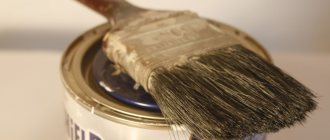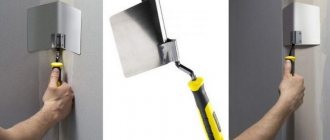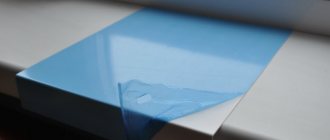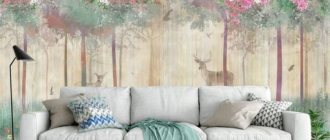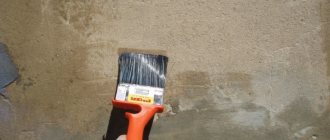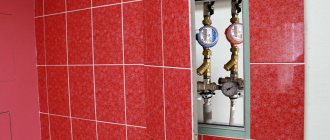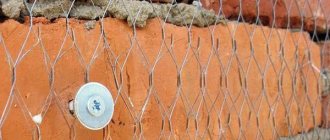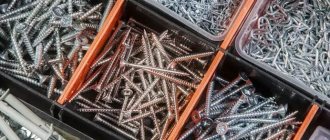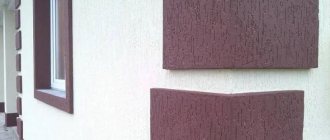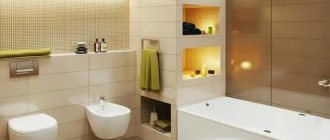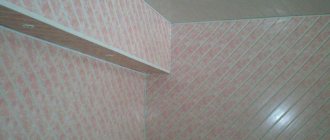Experienced artists never cease to repeat that the right drawing tools do half the work. To obtain high quality, you need to know how to choose functional paints, pencils and, of course, brushes.
You can’t paint a good picture with the tools at hand, and everyone can agree with this statement. Brushes are the most important and significant tool for a painter.
To be precise, it is not only or even so much the quality of the instrument that should be decisive. Undoubtedly, it is important that the pile is neatly collected and cut, the handle is comfortable and moderately long, the steel bridge does not rust and securely holds the working part on the handle. But the most important thing is that the brush must perform the function assigned to it. To understand which brush you should buy and how to choose the best tool among the huge variety, you will have to dive into the intricacies of classification, that is, get acquainted with all types of brushes for painting and creativity.
Structure of the hand
At first glance, it may seem that in the age of modern technology, making such a simple thing as a brush is not so difficult.
However, this is quite a difficult task. Just a few centuries ago, each artist made the necessary tools himself. Artisans making brushes appeared later.
Advanced technologies have made their contribution to production, so nowadays the range of materials, sizes and types of brushes can lead to real confusion for the novice painter.
To consider in detail the issue of existing types of art brushes, you need to know what this important tool consists of. All brushes have exactly the same structure.
There are three details that distinguish different models from each other.
- Hair bun . It is the working part of the brush and is a set of thin synthetic or natural hairs. The shape or size of the beam can be any.
- A capsule or sleeve is a metal clip that holds the hair bundle and serves as a support for it. In part, it is the sleeve that determines the shape of the beam. It also serves as a fastening element to hold the bun on the handle. It is usually made of stainless steel, since constant moisture can cause corrosion, which will adversely affect the aesthetics of the instrument. You can distinguish an expensive and high-quality brush by its all-metal clip. This capsule does not contain a seam.
- The handle or shaft is made of wood , although plastic options are often found. The shaft of a good brush is made of alder, beech, birch or aspen. To prevent paints from penetrating through the pores of the wood, the handle is varnished.
Natural
Natural bristles perfectly release the paint that they have absorbed and distribute it evenly over the surface to be painted. These qualities make brushes made from natural materials almost universal. However, the plus comes from the minus - such instruments will have to be changed more often than artificial ones.
Due to the absorption of watery paints and varnishes, the villi swell. Therefore, natural bristles will work better with enamel and other thick paintwork materials.
When choosing brushes for painting, it is better to immediately purchase a high-quality tool, that is, the price will be higher than the standard one, but it will last longer.
Pay attention to the thickness of the stubble. Manufacturers, in order to save long pile, combine it with short pile. The longest fibers take up more paint, which means the more of them, the better. Even in the photo, painting brushes with a good natural “brush” differ significantly from low-quality specimens.
Classification by material
In this classification, two groups are traditionally distinguished. Brushes are divided into natural and artificial. Belonging to one group or another is determined by stubble.
Natural brushes
In natural brushes, the bristles are made from six animals. Synthetic fiber is used to make artificial brushes. Artists' terminology uses the names of animals whose fur and hair form a hair bundle. In accordance with this, the brushes were named:
- Squirrel;
- Goat;
- Columns;
- Pony.
The squirrel brush uses natural squirrel fur. The tuft of this brush is highly soft. It absorbs water well and retains it for a long time. They are ideal for working with watercolors. In addition, the squirrel allows you to use various artistic techniques. The most popular of them are filling, washing and glazing.
The squirrel brush is durable if stored properly and used sparingly. Unfortunately, this tool cannot work with oil and acrylic paints.
It is also not suitable for any type of high viscosity topcoat. Thick and heavy layers of paint change the structure of the hair bundle, as a result of which the brush quickly wears out. She performs her functions worse and worse, and this is noticeable literally with every subsequent job. But this is not the only reason for limited applicability. In painting, thick paints play an important role due to their texture created when applying a stroke. A soft squirrel brush is simply not capable of making such a textured stroke.
Mixing paint or applying it to the canvas will be extremely inconvenient.
The kolinsky brush is made from the fur of one of the marten families. Kolinsky brushes are somewhat stiffer than squirrel brushes, but they also hold moisture well. Thanks to the higher rigidity of the columns, it expands the boundaries of applicability.
Such brushes can be used when working with gouache, but only in fragments. In general, artists prefer kolinsky brushes, as they are more elastic, but it should be noted that they are more expensive than squirrel brushes.
Goat brushes are ideal for working with acrylic paints. Moderately hard bristles give an excellent brush stroke with a unique texture. You can even work with impasto technique.
The low cost, lack of allergens and practicality of goat brushes contribute to the fact that these tools are most often chosen for children's creativity.
The brush makes a stroke with glue paints, gouache or acrylic. It is not recommended to work with oil if you have a goat brush. The hair bun turns out to be too fluffy. On the other hand, goat hair is not suitable for watercolors, as it will be too harsh. Practicality is represented by the fact that the beam practically does not deform or wear out, and it can also be washed well in water. Due to the nature of the bristles, you cannot paint small details with a goat brush. Small hairs stick out from the bun in different directions.
Some of the cheapest natural brushes are pony brushes. They are considered an excellent alternative to kolinsky and squirrel brushes.
Pony brushes are recommended for beginning artists who want to learn how to work with watercolors.
They won't notice much of a difference between a pony and a squirrel. If we judge more strictly, then a bundle of pony hair does not “give” water to the paper as well as squirrel or kolinsky, because it is not so flexible.
But an experienced artist is able to turn all the disadvantages to his advantage. Some painters change the pony to a squirrel in the process of work.
A badger fur brush has no distinctive features. The classic hair bun is quite soft. These brushes are suitable for working with gouache and watercolor when drawing small details.
Another tool for working with low-viscosity water-soluble paints is sable wool brushes. These paints include gouache and watercolor. Sable wool is unlikely to be suitable for an art school, since such brushes are quite expensive.
Experienced painters treat sable with care, as it allows you to draw a line by adjusting the direction of the stroke and the pressure at the same time.
If you closely examine the hair bundle, you will notice that the hairs are matched in length one to one, and they lie strictly in one direction. That is, the brush has a high degree of versatility, allowing you to work with both large details and draw small fragments. Note that even the highest quality protein does not have such properties. To summarize, we can say that the sable brush has absorbed all the advantages of squirrel and kolinsk.
Bristle brushes come in a variety of hardnesses as they are made from pig bristles. Hard brushes are convenient for working with oil, tempera and acrylic. At the same time, the soft bristles allow you to paint with gouache and even watercolors.
Optimally selected rigidity affects the result of the work. If desired, the artist can use bristle brushes to pick up paint from the palette and make a thick stroke.
Bristle has one important advantage - it allows you to implement the “dry brush” technique. Paint colors can be mixed to varying degrees of uniformity to create beautiful visual effects. The smear is raised, with thin grooves left by hairs.
Artificial brushes
Artificial or synthetic brushes are made specifically for working with oil and acrylic paints. But it cannot be said that absolutely all synthetics are suitable for oil painting.
Brushes are selected for each specific case. A synthetic bundle, unlike bristles, has greater elasticity and softness, and these properties remain constant over the entire surface of the bundle. It will be quite difficult to mix thick paint and apply a textured relief stroke. For synthetic brushes, special paints are selected - gouache. The fiber practically does not wear out and washes well.
Oil paint particles can become lodged under the metal frame and harden. As a result of the fact that a hard foreign body appears at the base of the bundle, the pile becomes deformed, and the brush becomes like a disheveled whisk.
Synthetic fibers do not release paint well, so brushes should be washed thoroughly. If the beam is deformed, then it is useless to restore it.
You can throw away this brush. Thinner won't help either. Soaking the brush for a long time will cause the bristles at the base to expand, and small rolls of paint will form on the hairs themselves.
It would seem that synthetics have more disadvantages than advantages. However, they are indispensable when a painting needs to be varnished or watercolor blurred.
Types of brushes
Both hard and soft brushes are suitable for painting with acrylic paints. Each has its own advantages and disadvantages and is used in certain techniques.
To work with acrylic paints, you can use both hard and soft brushes.
Soft brushes
Such tools, which are mostly made from natural materials, hold paint well and are suitable not only for acrylic, but also for watercolors and gouache. Artists use them to create fine, precise lines or to depict translucent tones. Using a soft brush is convenient for drawing small details.
The best natural, soft brush is considered to be sable. However, acrylic paints easily spoil this type of pile, so its use is not recommended. An alternative option is a tassel made half of sable and half of synthetic material. Well, a cheaper and more common alternative is a synthetic brush.
Hard brushes
In addition to weightless layers, acrylic paint is used to apply thick strokes. Using acrylic, you can use various relief and rough techniques, which require hard brushes that hold a lot of paint, and the strokes are clearer.
A brush for painting with acrylic should not only be hard, but also elastic and flexible enough so that the strokes are even and do not spoil the picture.
Modern painting tools meet the required specifications and are made from synthetic materials. Depending on the techniques used by the artist, a hard brush can be large or small, have different widths, and handle lengths.
Handle length
Despite the fact that the main working element of the brush is the hair tuft, the length of the handle plays a fundamental role in the choice. This criterion provides another type of classification.
Experienced painters always choose a tool with a wooden handle. Plastic does not withstand the effects of thinner, and it can also become deformed when washing the brush, especially when working with oil. There is no single theory for selecting handle length.
In this matter, everything depends on the preferences of the artist himself. But the weight of the hand also depends on the length of the shaft, and, as you know, a tool that is too light or too heavy only brings discomfort to the work process. When choosing a brush, it is recommended to hold it in your hand and evaluate its grip and weight.
It should be remembered that brushes with a short shaft fit into any pencil case.
Long brushes look more aesthetically pleasing, and the shaft itself serves the artist as a measuring tool. To summarize this issue, we note that long brushes are good when painting while standing. While sitting, the artist is forced to keep the brush closer to the clip, and the long shaft creates a counterweight and causes external forced vibrations to occur.
Comparison of the best art brushes for paints
In the rating, I talked about popular brands of brushes that work with different paints. Budget options, as well as professional series, were presented here. Before moving on to the best, I propose to compare all participants in a single table:
| Model | Pile | Numbers | Purpose | Peculiarities | price, rub. |
| Winsor & Newton | synthetics | 0-6 | watercolor | liner shape | 483-581 |
| Malevich | synthetics | 0-4 | beveled | round | 51-54 |
| Winsor & Newton | synthetics | 000-16 | acrylic | round | 471-568 |
| Nevskaya palette | nylon | 1-7 | watercolor and water-soluble paints | with tank | 153-185 |
| Nevskaya palette | synthetics | 0-8 | acrylic, tempera, oil | round | 97-104 |
| BRAUBERG | squirrel | 1-5 | watercolor, gouache, tempera | conical | 225-430 |
| GAMMA | squirrel | 1-8 | watercolor | conical | 125-203 |
| GAMMA | synthetics | 1-8 | ink, gouache, tempera, oil | flat | 132-212 |
| Roubloff 1410 | squirrel | 0-10 | watercolor | round | 219-325 |
Pile length
The long bristle of the brush is convenient for working on sketches, when the artist applies strokes with free movements with a large amplitude. Gradually he moves to brushes with shorter tufts.
The “poke” method of applying strokes is interesting. For this method, very old brushes with fairly worn bristles are used. Artists call these brushes “splay brushes.”
It is believed that buying brushes with short bristles is not justified, since long bristles wear out over time.
Some craftsmen trim the bun at their own discretion. In synthetic bundles, wear occurs more intensely, especially if the dye is poorly washed and accumulates at the base of the hairs. For watercolors, it is better to buy brushes with long bristles.
A bristle tuft will allow you to work with thicker paints. For those who do not want to spend money on buying a new bristle brush, there is a special life hack for resuscitating bristles. The hairs inside the clip are glued into a bundle using rosin, which melts well at elevated temperatures. This resource can be used for your own purposes.
The base of the brush is heated on the open flame of a burner or candle, and after the rosin has melted, the bristles are pulled out from the holder using pliers. It is important here not to overdo it and not to pull the hairs completely out of the clip. Usually it is possible to lengthen the beam by 2–3 cm.
Features of acrylic paints
In the construction market today, acrylic paints and varnishes are very popular, which are suitable for painting ceilings, walls, floors, windows, wooden and metal structures.
The advantages of such finishing materials include:
- ease of use;
- ease of application;
- quick drying;
- no pungent odors;
- versatility.
For reference! The components that make up acrylic paints dissolve well with ordinary water, since these materials are produced on a water basis.
When choosing acrylic paints for repairs, few novice finishers think about what brushes they need to work with such paints in order to obtain a high-quality, uniform and even coating.
Acrylic paints, for all their advantages, have special properties that should be taken into account when choosing a painting tool. By choosing the right brush with high-quality bristles, you can avoid many problems during painting.
Acrylic paints dry quickly, but this always gives a positive effect. When you need to create a uniform coating with transitions invisible to the eye on a large surface area, you need to use special brushes.
Classification by cutting quality
The quality of the material from which the handle is made affects the comfort of work. The handle of a brush is no less important than its bristles. The ideal option is a moderately long handle made of wood and coated with paint or varnish.
The varnish provides a kind of protection during work.
Trapped moisture and paint will not prevent the artist from holding the brush comfortably in his hand, and thinners will not cause damage to the wood. Excess dried paint is removed from the handle by washing it in water and laundry soap. As a last resort, you can always sand the shaft with fine sandpaper and re-varnish it. The protective layer does not prevent damage to the shaft.
Any cutting can become deformed or deteriorate over time, as the varnish gradually cracks and the integrity of the protective layer is compromised.
The main reason for brush handle damage is improper storage conditions.
The instrument should not be left in water for a long time, and especially not in thinner. A deformed rod is not only uncomfortable to hold in your hand. During the work process, chips from the surface fall onto the canvas.
Malkovitsa
They have their own varieties, but they all differ in their volumetric working surface. The shape can be rectangular, round or oval (for professional work) - each has an individual name. The handle of a standard malkovitsa is short, but in large construction hypermarkets it is possible to find a model with a long handle and better quality hair, which costs more.
Ideal for spacious painting, ceilings. The floor is also a large surface, but be careful: among the properties of these models is hyperabsorption, which makes painting with dense liquids unprofitable and costly.
But it works great with wallpaper glue and water-based paints.
Brush shape
All brushes can be divided into three groups according to the shape of the base.
- The first group consists of round brushes, the base of which is made in the form of a cylinder.
- The clip of flat brushes is strongly flattened. In profile it is a rectangle with a short side length of about 2-3 mm. Since the base determines the shape of the beam, the thickness of the beam also does not exceed 3 mm at the base.
- Compressed brushes are an intermediate option. Their base is flattened to a thickness of 5–6 mm.
Brushes of each group are in demand and serve to perform specific tasks. The artist makes sketches using a flat brush. The brush leaves a broad, but not too textured stroke. They are usually used to write large format sketches.
To obtain textured strokes, compressed brushes are used. A peculiar bunch of oval cross-section picks up paint well and subsequently transfers it to the canvas.
Artists choose this type of brushes because they are convenient for mixing paints on the palette so that they do not mix completely.
The result is shades that give the sketches greater expressiveness. Round brushes are used for drawing small details into a pre-prepared composition. An experienced painter has all types of brushes in his arsenal.
Here it is advisable to consider the varieties of the tip of the hair bun, since the shape also depends on it. The bunch of round brushes is usually pointed or shaped like an oval. A pointed tip is obtained if several hairs converge into one flagellum. Using sharp beams, the artist draws fine lines. By varying the pressure, the painter changes the thickness of the line.
Thin beams are usually used to form outlines, to emphasize or fit elements with a high degree of precision.
The oval brush is designed for shading and creating volume. Flat brushes are also divided into several types. There are bundles with a square and rectangular profile, with an oval profile and with rounded corners.
Such a gradation is unlikely to help a beginner, but an experienced artist can achieve different effects by varying the stroke silhouettes. The square beam profile is in demand when painting landscapes and still lifes, as it gives a “ragged” character.
Rounded corners add delicacy to brush strokes. This brush is used to paint figures of people and animals. To draw portraits, oval brushes are used, since with their help you can apply strokes to each other, as if rubbing one into the other.
Round
Round brushes for painting are in less demand, but have the same advantages: they perfectly paint hard-to-reach corners, doorways, and windows. The disadvantage is the strong filling capacity, but the low yield of coatings. That is, too much liquid remains between the tufts of bristles - this reduces the effectiveness of painting work.
The working surface of this type can be large (the so-called flywheel) or small (ordinary). Swing tools are similar to malkovits - they are common when processing large areas. The diameter ranges from 60-65 mm.
To sum it up, we can say that choosing the right brushes and brushes is on par with the choice of paints and varnishes.
Quick-drying, odorless paint for interior work - main types, selection tips and benefits of useThe best aerosol paint in cans - main types, application features and advantages of use
The best water-based paint - ranking of the best manufacturers of 2018
Buying a flat brush for painting or a round one is more of an individual preference than a necessity.
Look at the fibers in the store and definitely buy them if:
- When deliberately pulling out hairs, no more than two pieces remain in the fingers.
- A convenient cut is a long center, shortening towards the edges. This makes it easier to control the distribution of liquids.
- By pressing on the structure of the bristles and then releasing them, they return to their original state.
Finally, just feel the handle in your fingers. The brush will last for many years, which means it is convenient
Brushes size
Unfortunately, there is no single standard for sizes, since different manufacturers introduce their own scales. They do not correspond to each other either in absolute values or in ranges.
The only thing that unites the scales is that as the serial number increases, the size of the hair bundle increases. On sale you can find brushes with numbers “0” and “00”. Such brushes are practically not used in painting, but are used in artistic painting.
To create a complete work of art, you will need brushes of different sizes. If in one picture there are strokes of different sizes, then this indicates the professionalism of the artist and the high quality of his creation. They begin to paint with large brushes.
Their size numbers range from No. 20 to No. 30. These brushes form a color-tonal base. Specific objects are drawn with a medium-sized tool (No. 10 - No. 20). Detailing involves the use of brushes No. 3 - No. 10, and the thinnest beams are used for framing, marking the edges of the object, drawing the corners of the eyes and highlights. You may notice that the numbering of flat brushes has its own peculiarity, namely the absence of odd numbers. Typically a flat brush is a round brush with a flattened base.
Squeezing the No. 1 round brush essentially produces a flat No. 2 brush, and squeezing the No. 2 round brush produces a flat No. 4, but it can also result in a No. 3 brush. To avoid confusion and a large number of sizes, odd numbers have been removed from flat brushes.
Flute
The word “flutz” is usually used to refer to flat brushes; this type can most often be found in non-specialized stores. A variety of sizes are available upon purchase, but the bristle size is often standard – 60 mm.
Flat brushes are suitable for painting large surfaces, baseboards, window rails, window sills, etc.
Several brushes of different “dimensions” for all occasions can easily replace a set of various brushes, that is, they are not afraid of paints, varnishes, or enamels. Another advantage is that during operation the consumption of paint materials is saved, this allows you to paint more surfaces.
Special brushes
As mentioned above, most artistic works are created using several types of brushes, including both round and flat options.
But sometimes you have to use special brushes.
They are not so often in demand, but are indispensable when creating certain visual effects.
- Retouch brushes. Retouching brushes are used to achieve ultra-precise strokes. They are similar to ordinary flat brushes, but the beam is cut not at a straight angle, but at an acute angle. The specific shape of the tip allows the artist to change the thickness of the working area of the beam. Sharp hairs can be used to paint hard-to-reach places in a painting or to draw subtle contours.
- Stencil brushes. The hair tuft of the stencil brush is quite dense and tight. It is a cylinder and has a blunt, flat tip. The stencil brush is convenient to use when applying paint using the vertical blow method. This method is used when drawing through a stencil. In addition to this purpose, a stencil brush is used for glazing.
- Fleitz brushes. It is convenient to treat large areas with brushes with a wide beam. The Fleitz brush is a flat brush. It is designed for free-flowing or for forming broad strokes on large formats. Since the Fleitz hair bundle is able to retain moisture, it is chosen when working with watercolors.
- Fan brushes. The fan brush also belongs to the flat brushes, but is distinguished by a sparse tuft, the hairs of which are arranged in a fan. A fan brush is convenient for shading paints applied to the canvas. Artists widely use fans for color stretching. If the beam is soft enough, you can mix colors directly on the canvas. Fan work is in demand in abstract painting, portraits and landscapes. Softening textures and contrasts gives original visual effects.
- Mop brush. The mop brush is called a mop because its tuft is capable of absorbing a huge amount of paint. It belongs to the round brushes and the bun is made of natural hair. The tip of the beam is semicircular and very soft. With such a brush you can not only apply paint and moisture to the base, but also remove excess moisture from the canvas.
- Schleppers. Schleppers or type brushes can be identified by their appearance. These are thin brushes with a long tuft with a pointed tip. They are typically used for lettering, thin edging, and backlighting. A lot of paint accumulates in a long beam, so it is possible to draw a long line without tearing off and without filling the brush.
- Liners. The bristles of the Liner brush also form a long tuft. Its length can reach 25 mm. But unlike the schlepper, the liner beam is thin only at the tip. These brushes are used in airbrushing. They are convenient for emphasizing contours or forming lines of the same thickness. By adjusting the pressure, the artist is able to draw lines of different thicknesses. The relatively thick tuft in the base area acts as a reservoir for paint.
Artificial
Nylon or polyester models are useful for watery paints, as they retain their shape while working. Only synthetics are used when painting latex-based paints. They are not exposed to water, their service life (with proper care) is much longer, and the length of the pile does not matter.
Making a synthetic brush involves “imitating” pig hair, that is, splitting each bristle tip into a scale-like pattern, which increases paint pick-up. However, the result is still different, so the paint fence is lower.
